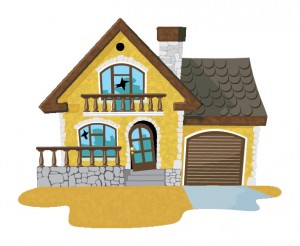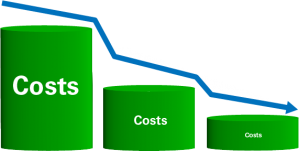 “Hard” money doesn’t mean “stupid” money. The hard money lender wants to be paid back on time and doesn’t want to foreclose. Hard money lenders are no different than any other lender in that regard.
“Hard” money doesn’t mean “stupid” money. The hard money lender wants to be paid back on time and doesn’t want to foreclose. Hard money lenders are no different than any other lender in that regard.- Hard money is an important player in the real estate industry. Hard money is used to acquire and renovate properties that traditional banks won’t touch in the property’s existing condition. Once the property is renovated and brought into proper condition, buyers can find financing anywhere.
- Hard money loans require more down payment, higher interest rates and closing costs. You might expect to put anywhere from 30-50 percent down, pay three to five points in addition to traditional closing costs. These costs must be considered when evaluating a potential acquisition.
- A clear exit strategy is a must for both you and the hard money lender. The lender needs to understand how the loan will be paid back. Will you obtain a conventional loan to replace the hard money or sell the property to pay back the investor?
- Hard money loans are for a very short term, some as short as 90 days. The hard money lender will extend the loan for as long as needed to buy, renovate and flip the property. If renovations are taking longer than expected, hard money lenders can write up a loan extension, for a fee.
- Different hard money lenders will have different preferences for property types. Some hard money lenders may only like to finance single family residential rehabs while others will finance a strip mall or an apartment building.
- Don’t start shopping for a hard money lender once you’ve found a property. Plan way ahead. Before making an offer on any property that needs a hard money loan, review the prospect with at least one hard money lender to see if it’s a viable deal.
- Because hard money lenders can go after particular properties, if one hard money lender declines your proposal, keep going. If the deal makes sense and you can back it up with documentation, you’ll find a hard money lender.
- Hard money lenders get their money in three primary ways: solicit investment funds from individuals to finance a lending pool, solicit funds from individuals as each potential project arises and obtaining short term funds from a conventional bank. Sometimes hard money lenders want to make a loan but the funds aren’t readily available.
- When hard money lenders solicit individual investors for a project, the individual investors can decide on their own whether or not to invest. They’re not obligated to finance anything they don’t like and use their own due diligence to review a project even after the hard money lender has approved the project.



